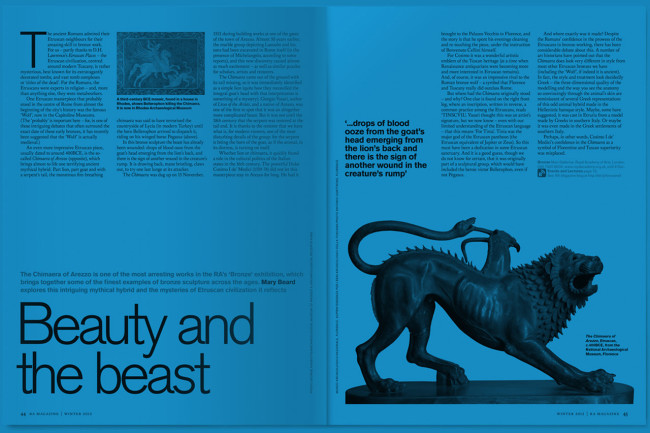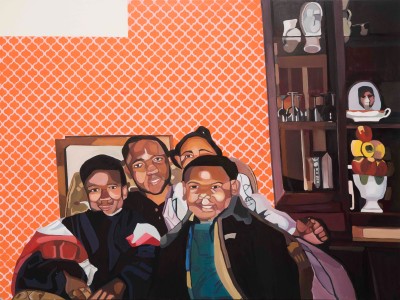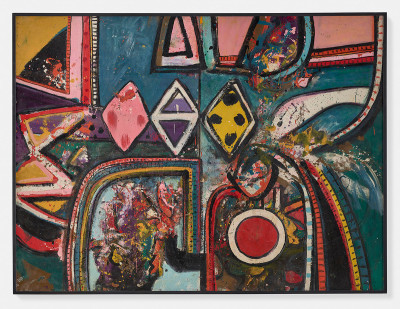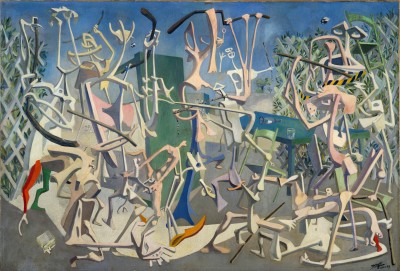Six degrees of separation: From Victor Pasmore to Donna Huanca
Six degrees of separation: From Victor Pasmore to Donna Huanca
By Sam Phillips
Published 15 November 2016
How do Pasmore’s mid-century stylistic transformations link to Huanca’s paint-smeared performers? Sam Phillips joins the dots, by taking in six winter shows.
-
-

1. Victor Pasmore RA
Victor Pasmore turned towards abstraction after the Second World War, his figurative landscapes and still-lifes superseded first by swirls of colour, then by rectilinear shapes influenced by Russian Constructivism. Nottingham’s Djanogly Gallery and Pallant House, Chichester, explore this radical shift in the British artist’s career.Djanogly Gallery, 26 November – 19 February 2017
Pallant House, 11 March – 11 June 2017
-
-
-
2. Zaha Hadid RA
The geometry of Russian Constructivism also had a huge impact on Zaha Hadid RA. One of the late architect’s heroes was Kazimir Malevich; her buildings explored his ideas about “how space itself might be distorted to increase dynamism and complexity”, she explained in a 2014 article in RA Magazine. London’s Serpentine Galleries present Hadid’s paintings and drawings, whose bold, fractured forms recall the Russian’s angular aesthetic.8 December – 12 February 2017

-
-
-

3. Robert Adam
The 18th-century architect Robert Adam also made many paintings and drawings, producing evocative landscapes in watercolour and adding coloured washes to his studies in pen. Sir John Soane’s Museum in London, which holds the most comprehensive collection of drawings from Adam’s office, displays highlights related to his prestigious work in the capital, which included interior decoration for Buckingham House (later Buckingham Palace).30 November – 11 March 2017
-
-
-
4. Drawing in Red
Drawing also takes centre stage at Christ Church Picture Gallery in Oxford, which displays a small but splendid show of works in red chalk, also known as sanguine. From the 15th century onwards, the medium was embraced by Europe’s most important artists, including Michelangelo, and Leonardo da Vinci, who adopted sanguine in his Last Supper sketches for its suppleness, solubility and warm colour.until 16 January 2017

-
-
-

5. Yves Klein
From the possibilities of red to the power of blue, in an Yves Klein survey at Tate Liverpool. The French artist and agent provocateur famously invented his own colour, International Klein Blue, and, infamously, used naked female models as paintbrushes to produce his ‘Anthropometry’ series. The exhibition features major works by Klein rarely seen on these shores, such as his ‘Fire Paintings’, made with the assistance of Bunsen burners and flame-throwers.until 5 March 2017
-
-
-
6. Donna Huanca
“With regard to Klein, I don’t relate to a man wearing a tuxedo pointing a wand, directing the naked female body”, says the Chicago-born performance artist Donna Huanca. In her show at London’s Zabludowicz Collection, her models covered in paint, latex and cosmetics are in her words “symbols of power”.until 18 December 2017

-
-
-
Enjoyed this article?
Become a Friend to receive RA Magazine
As well as free entry to all of our exhibitions, Friends of the RA enjoy one of Britain’s most respected art magazines, delivered directly to your door. Why not join the club?

-










